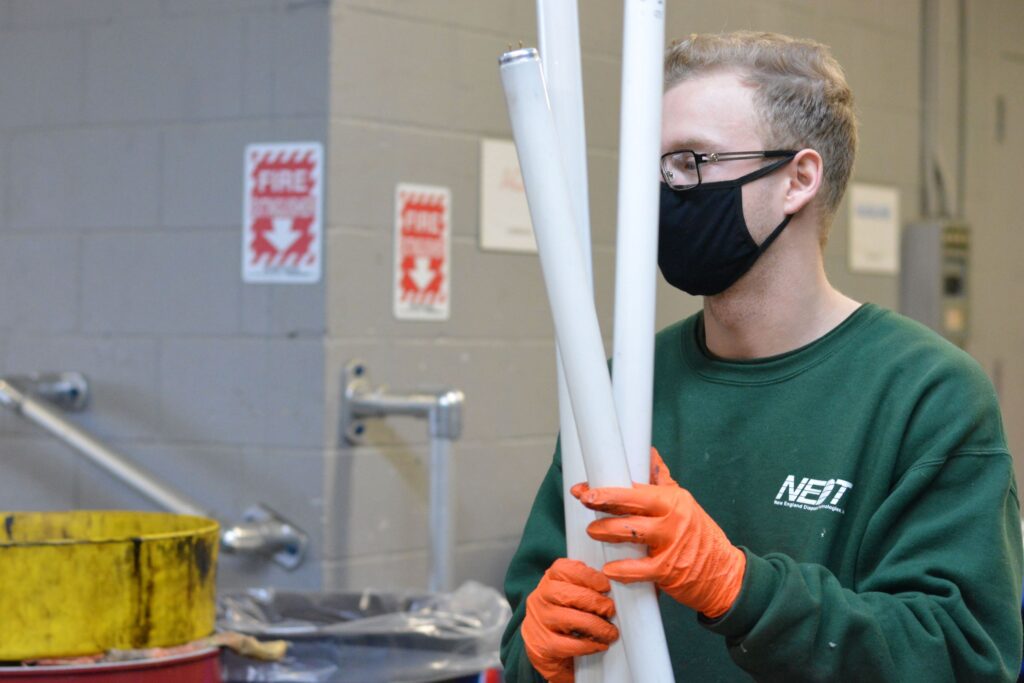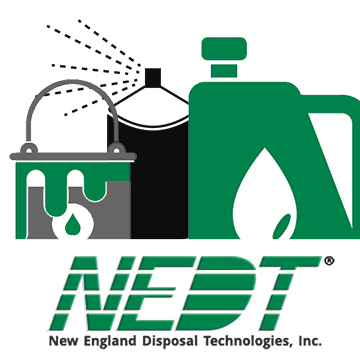Fluorescent lamps, sometimes called fluorescent bulbs, fluorescent tubes, or compact fluorescent lamps (CFL), depending on the specific style, all share some basic features that make them hazardous when handling and disposing of them – namely their fragile nature and the chemical composition of the gases within that are held at a near-vacuum. Today, let’s go over what you need to know about the at-home hazards of fluorescent lamps and what you can do to minimize the risk of this household product.
Why are Fluorescent Lamps Hazardous?
Fluorescent lamps are filled with a mixture of a specific noble gas (typically argon, but it can also be Zenon, neon, or krypton) and mercury vapor. Typically, there’s actually very little gas inside the tube, about 0.3% of atmospheric pressure or a near-vacuum. This near-vacuum, combined with the thin glass required for the lamp to function, means there’s a risk of damaging the bulb – which will cause an implosion that can spread both glass shards and mercury vapor in an explosive pattern.
Understanding and Dealing with the Hazards of Mercury
Mercury is in fluorescent lighting, most commonly tube lights or compact fluorescent lighting (CFLs), but it also includes high-intensity discharge (HID) lamps, ultraviolet lamps, and neon lighting. This lighting contains gasses that glow under current, and a vital part of that is small amounts of mercury.
Because of the fragile nature of this lighting and the hazardous substances within, care needs to be taken when handling and disposing of these lights. Do not dispose of them in your home; if fluorescent lighting breaks, follow the EPA’s instructions for cleaning them up.
Learn more in our blog, Mercury and Other Hazardous Metals Used in Household Lighting and Electronics.
How to Properly Handle and Dispose of CFLs
Below are a few tips on how to better handle fluorescent tubes and CFLs to avoid them breaking and minimize damage.
- Make sure the bulb or tube is turned off and allowed to cool completely before handling.
- For fluorescents with screw-in bases, screw/unscrew by holding the base instead of tubing and use gentle force, and avoid overtightening or forcefully twisting the glass tubing.
- Use eye protection and consider using a drop cloth (a sheet or tarp) when removing a light to avoid mercury contamination of nearby surfaces in the event of breakage.
Due to them containing mercury and posing an implosion hazard, fluorescent lighting cannot be thrown away in the trash (similar to other electronics, especially CRT monitors). If possible, repackage used tubes in bulbs in their original protective packaging and take them to a disposal center. NEDT’s Household Hazardous Products Collection Centers can help by providing quick and safe service for all your hazardous waste needs, including a pickup service! Contact us today to learn more, including what to bring in. You can also call us at 866-769-1621.




Leave a Reply